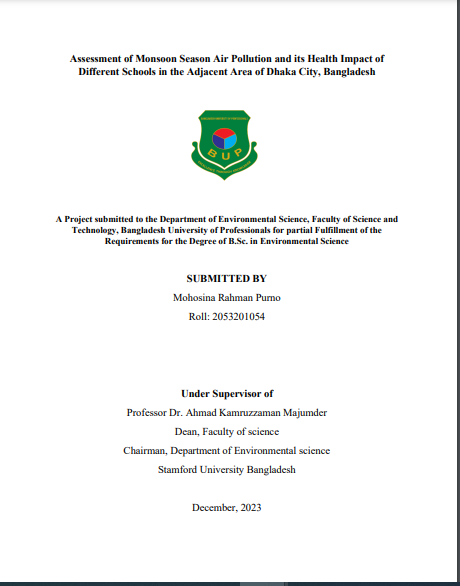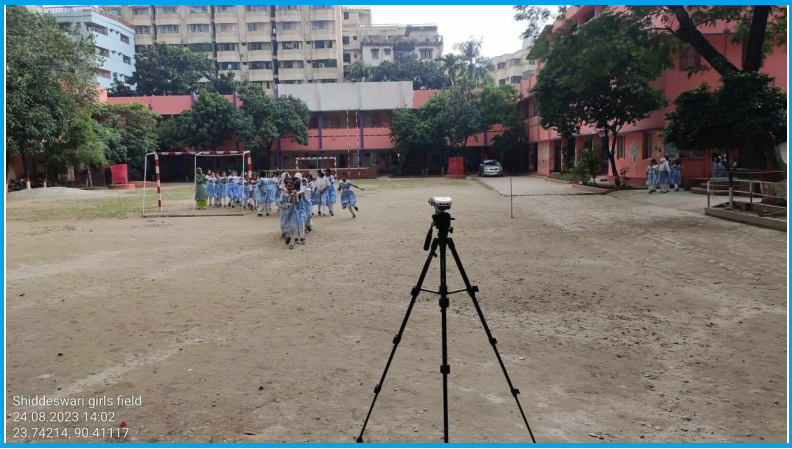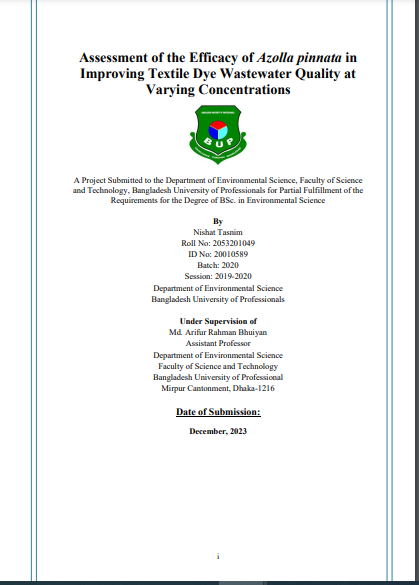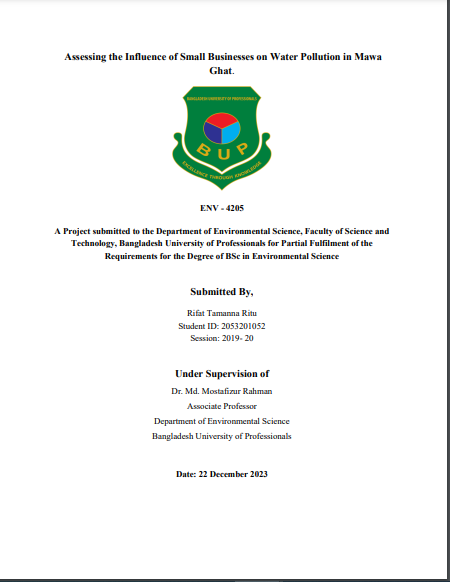
Assessment of the Monsoon Air Pollution & Health Impact on Dhaka Schools.
The objectives of the study to monitor the Particulate Matters (PM2.5 and PM10) concentration based on different schools in the adjacent area of Dhaka city. This study also observes health impacts of students by surveying among students. Air pollution poses a significant to the heath of school going students as they are particularly vulnerable to its adverse effects. This report was carried out across in five schools of Dhaka city by utilizing Aeroquip s500 and also a health impact questionnaire survey among students. This report shows that the schools air quality in the monsoon season is quite good due to the rainfall. The result suggests need for focused interventions to enhance air purity concerns and support a healthier school environment, even though all participants deny experiencing sleep disruption.
| Report Title : | Monsoon Air Pollution & Health Impact on Dhaka Schools. |
| University Name : | Stamford University Bangladesh |
| Submitted To : | Dr. Ahmad Kamruzzaman Majumder |
| Submitted By : | Mohosina Rahman Purno |
| Total Page : | 85 |
Background of the Study
According to WHO, in 2024 over 90% of the world’s population were exposed to an annual average PM2.5 absorption that exceeded the WHO air classification guideline value of 10 μg/m3, and air pollution became the 4th risk factor in 2024 for premature death worldwide. Air is a valuable natural resource that sustains life. However the contamination of this essential resource can impede human activity. Furthermore, In Bangladesh, there were 143,000 deaths caused by air pollution in 2018 to 2022, it increasing to 173,500 in last 2024. Moreover, Environmental air pollution is caused by thousands of pollutants, the most often examined of which are individual matter (PM2.5) with a 50% cut-off aerodynamic diameter of 2.5 µm, PM10, carbon monoxide, ozone, sulfur dioxide, and NOx.

Problem Statement
Air pollution has an adverse impact on physical, social, and psychological wellbeing. Air pollution in different school and college areas are creating health risk for students. Air is very essential elements for our living. Air is polluted for many natural and anthropogenic causes. It also has an impact on student’s psychological health. In school areas air pollution are hampering students learning activities. The air in school and college buildings can include a variation of gaseous pollutants that might harmful for students’ health, including carbon monoxide, ozone, sulfur dioxide, nitrogen oxides, and others.
Outline of the Report
INTRODUCTION PART:
Background of the study, Problem Statement, Rationale of the study, Research Gap, 5 Research Question, Challenges/limitation of the Study, Research Objectives, Definition of terms used in this project, Outline of the project.
6 REVIEW OF LITERATURE PART:
Air Pollutants, Particulate Matter (PM1, PM2.5, and PM10), Journal Related with PM2.5, and PM10, Research Gap
STUDY AREA AND METHODOLOGY PART:
Conceptual Framework, Design, Study Area, Research Methods, Air Quality Parameter, Flow Diagram of Research Methods, Area Selection, Data Collection, Data Processing, I = the (Air Quality) index
RESULT AND DISCUSSION PART:
Status of Air pollution Studies in Dhaka city, Dispersion of PM2.5 and PM10, Dispersion of PM2.5, Dispersion of PM10, Significance Test: Land Use Based Cluster Analysis, Interpolation Map of Different schools in Monsoon on PM2.5 and PM10, PM2.5 Interpolation Map of selected schools in Monsoon, PM10 Interpolation Map of selected schools in Monsoon, Survey on the students about their Health Impacts, Result from Health impact survey summary
CONCLUSION PART:
Conclusion & Recommendations, REFERENCE PART: Appendices
Research Question
The research question of the project can be
- What is the status of monsoon seasons air pollution level among different schools?
- How air pollution effects on student’s health?
Objectives of the Research
The main aim of this study is to assessing the air pollution characterization and health impacts in different schools in Dhaka city and also identifying its probable impacts among the students and teachers. The main objectives of this study are:
- To Measure the Air pollution level in the selected school area.
- To compare the air pollution level among different school and college area.
- To identify probable health risk of air pollution among students.
- To assess the relationship among different schools and parameters (PM2.5 and PM10).
Conclusion
The World Health Organization (WHO) and Bangladeshi air quality standards have both been compared to the PM2.5 and PM10 concentration data related to air quality that was gathered from the five schools. Regarding the amounts of particulate matter pollution in school surroundings, the results show an alarming tendency. The data collected in the monsoon season so air quality was comparatively better. From this study we identify that monsoon air quality is better. Rainfall or precipitation has a great impact on air quality.
There is no way to completely eradicate air pollution. The need to lessen motor transportation’s detrimental effects on the environment is linked to the industry’s rapid development. The government ought to have started cleaning up the city sooner.







